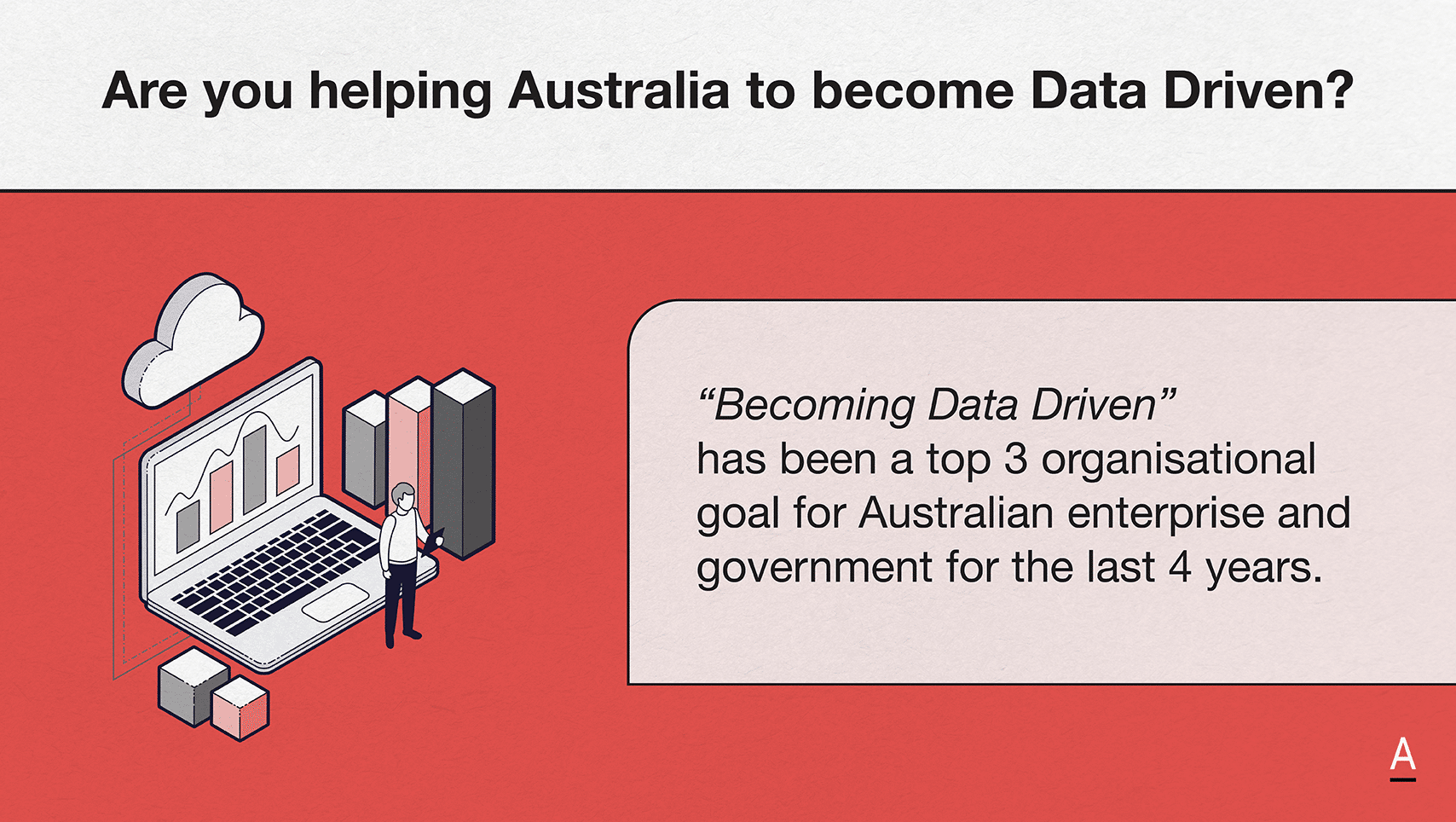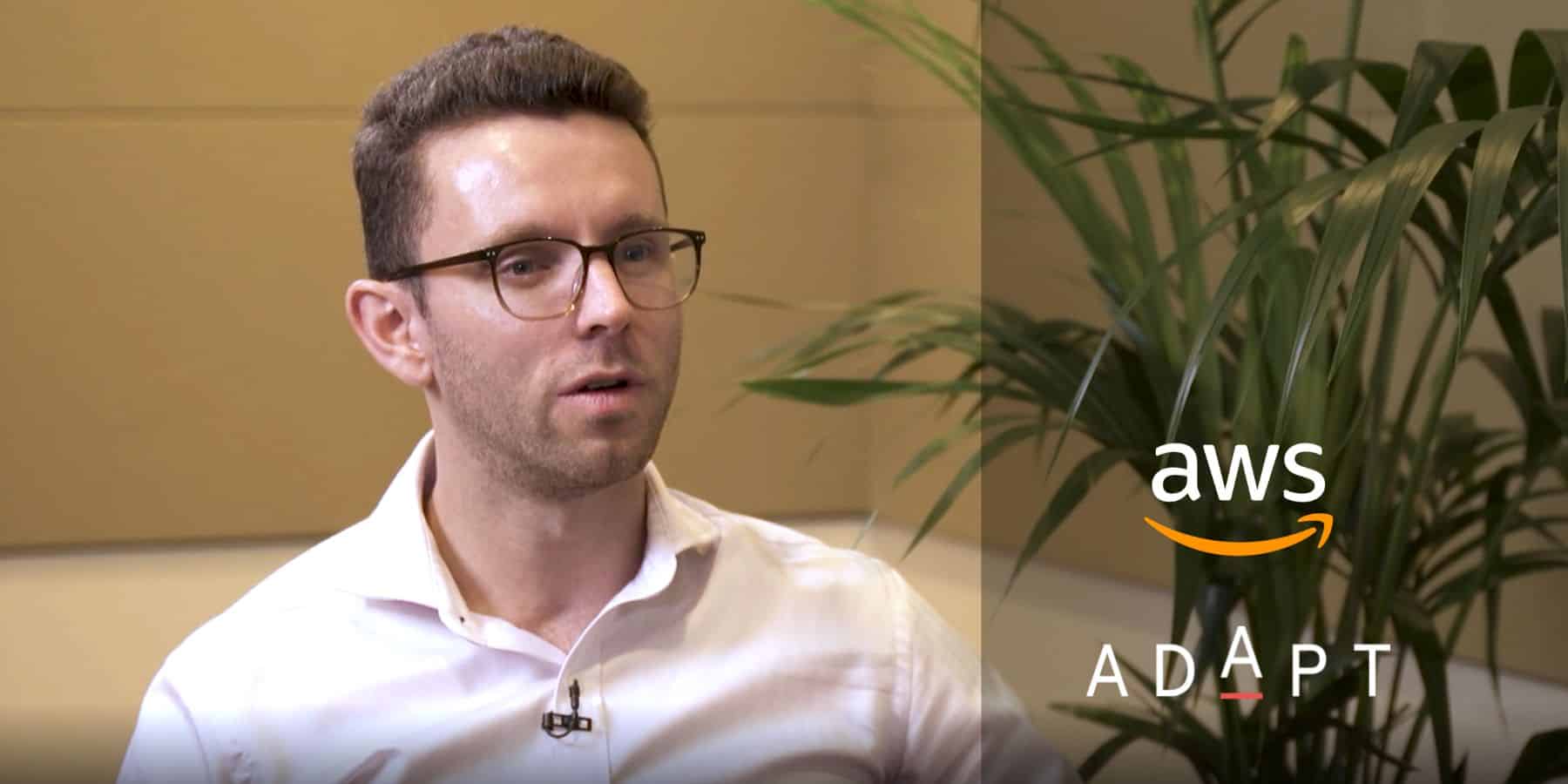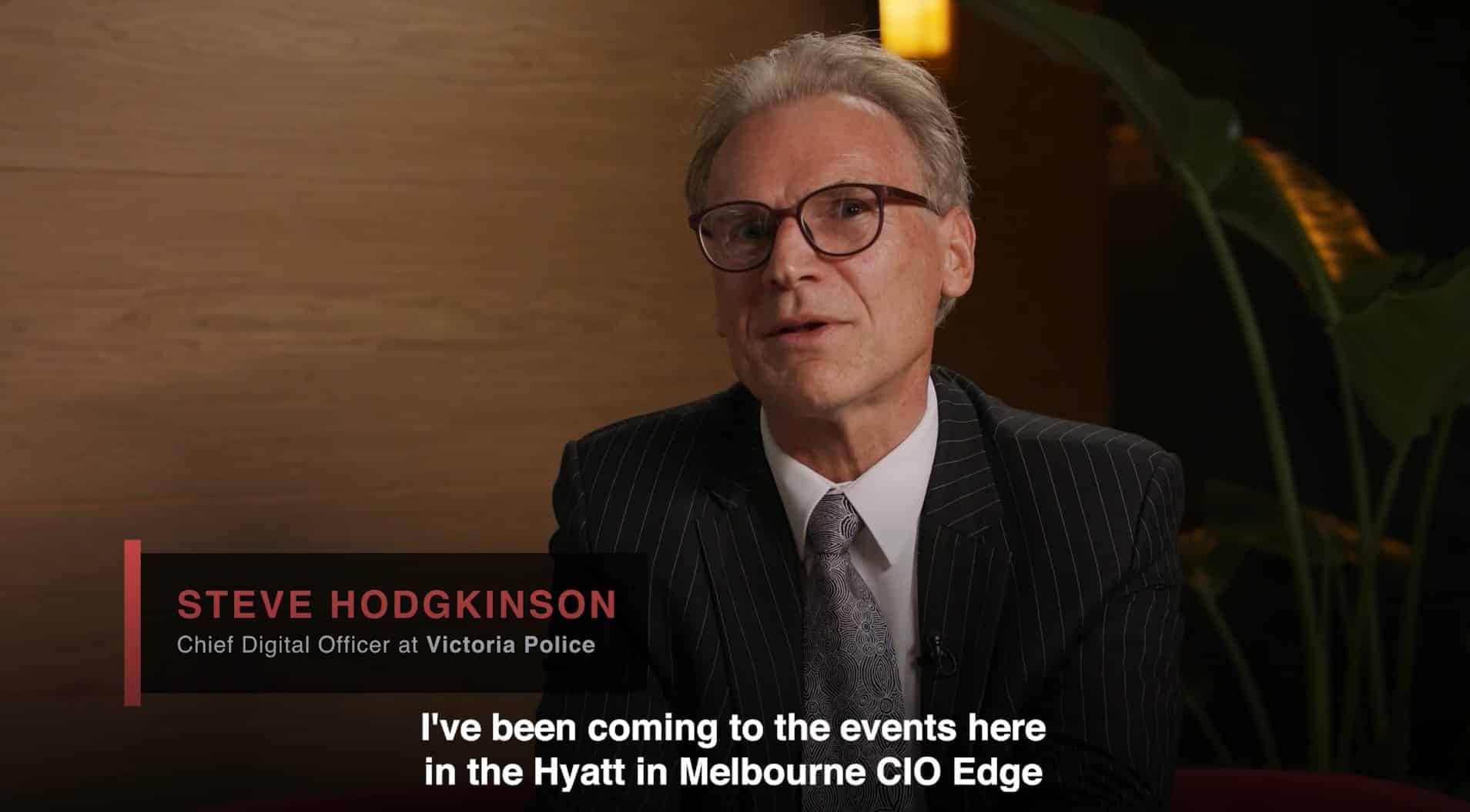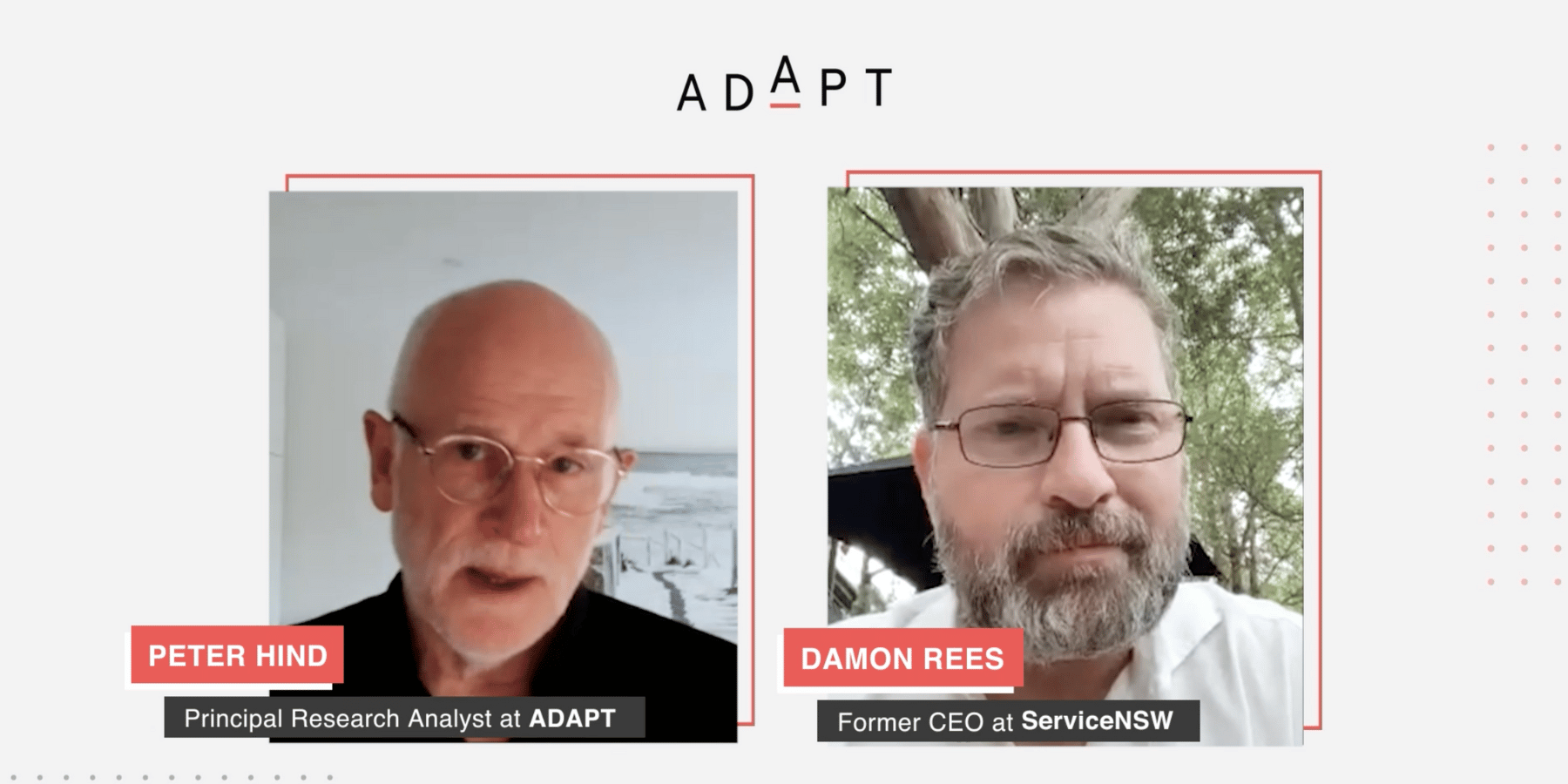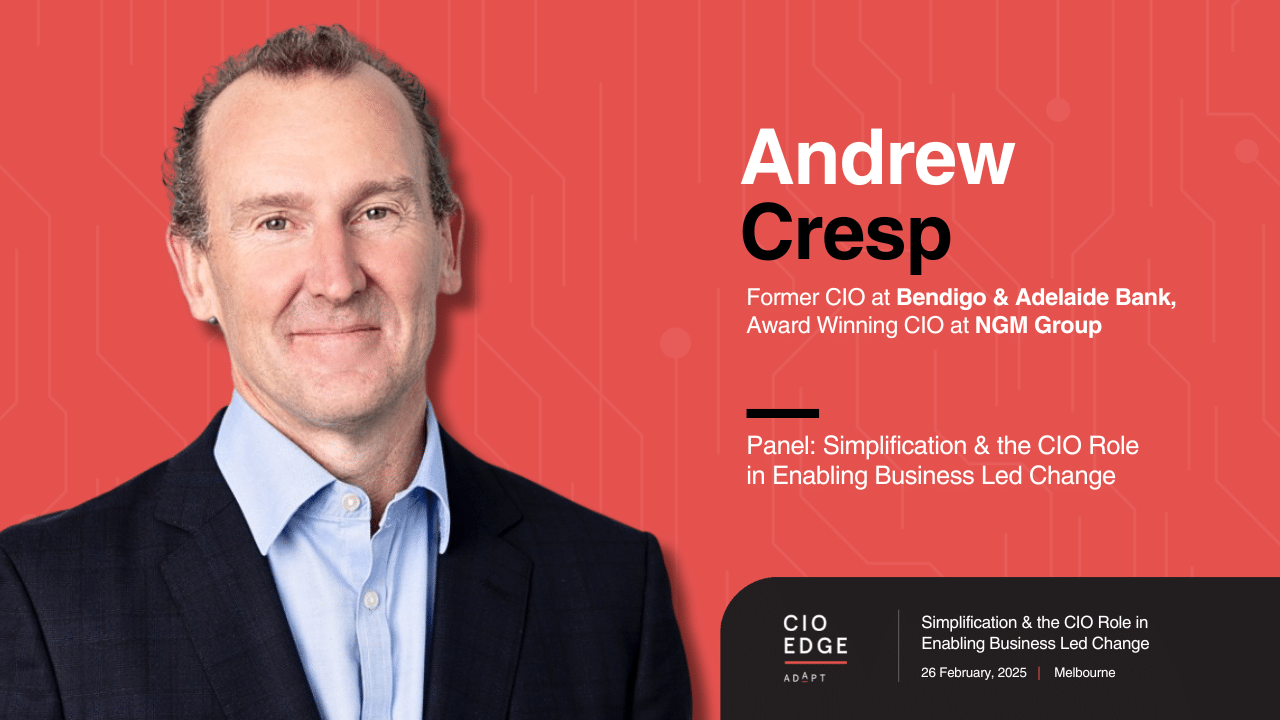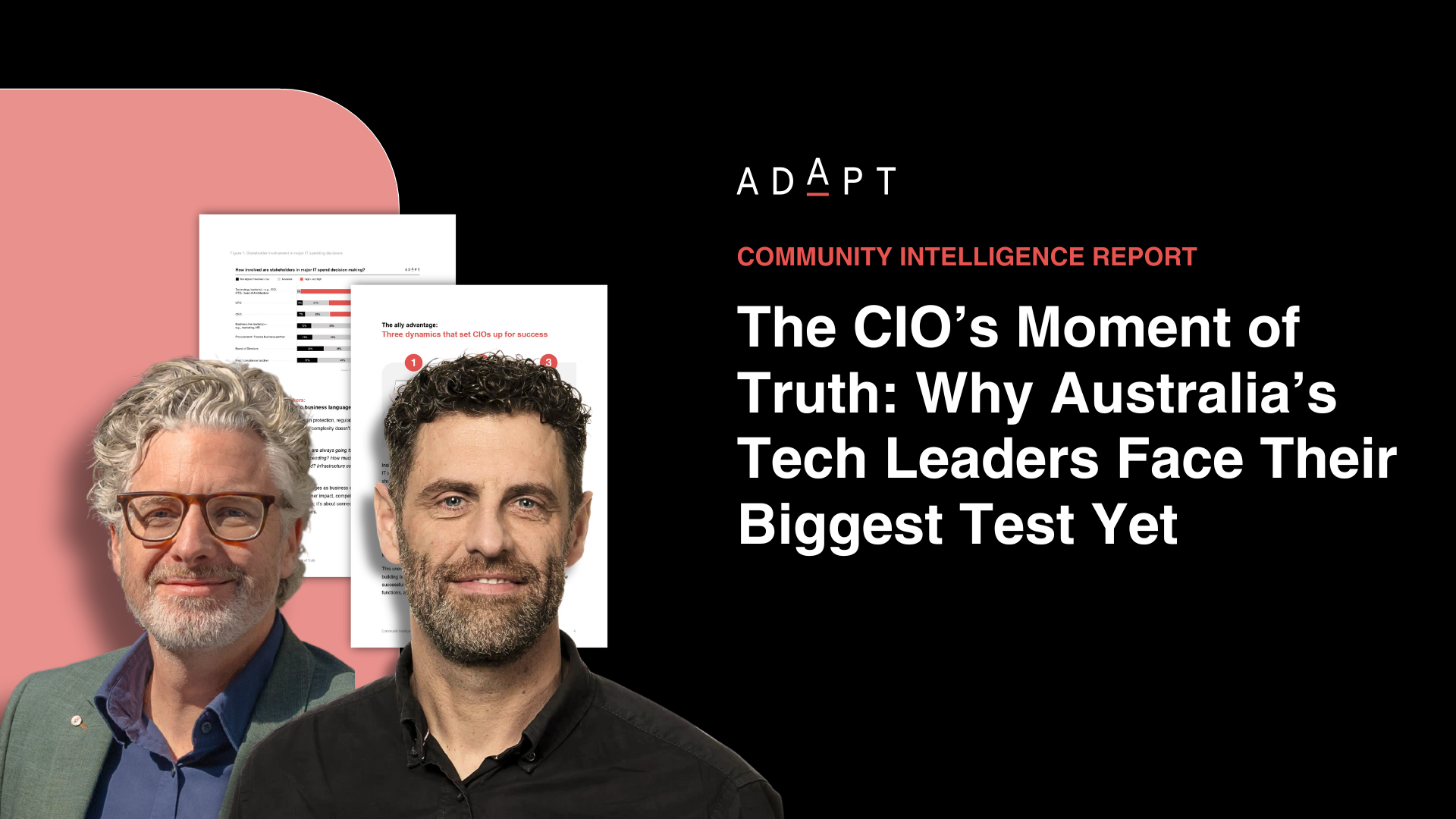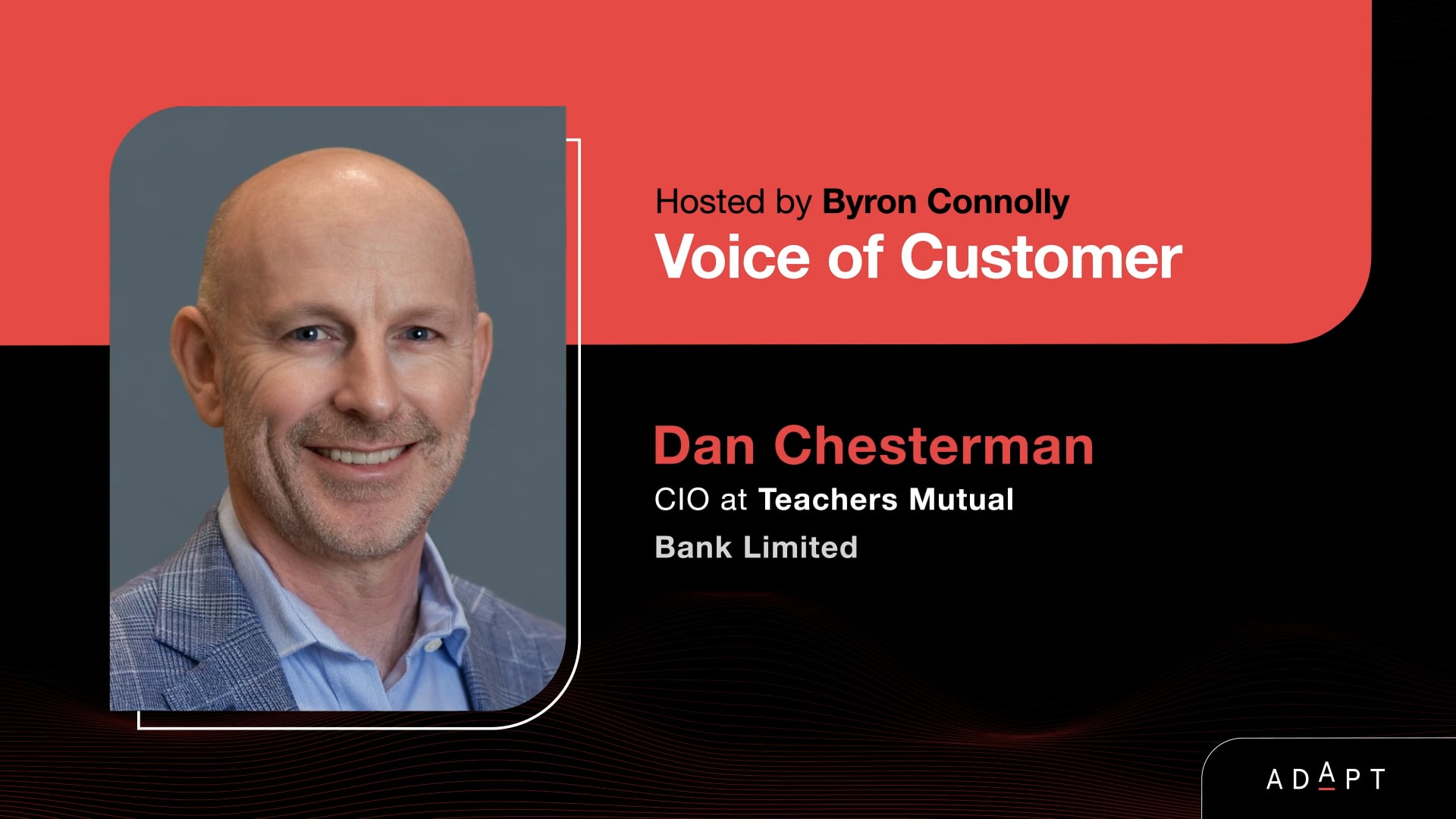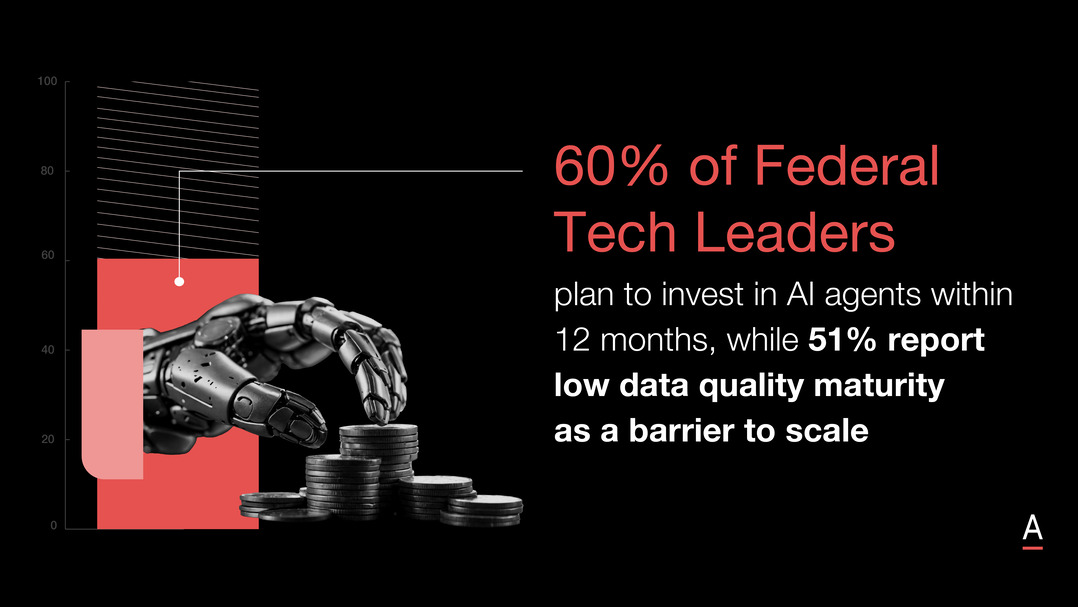Andrew Cresp, former Bendigo & Adelaide CIO and now CIO at NGM Group, shares how CIOs can drive business-led transformation, simplify complexity, and align technology with strategy.
Andrew has led major technology transformations in financial services, navigating mergers, regulatory shifts, and digital evolution.
He focuses on simplification, fast decision-making, and aligning IT with business strategy to help organisations balance innovation, risk, and efficiency.
In this interview with Peter Hind, Principal Research Analyst at ADAPT, Andrew talks about how CIOs can lead business-driven digital transformation, simplify complexity, and align technology with strategic goals.
He will join 180 CIOs and IT leaders responsible for delivering on the technology strategy for one-quarter of Australia’s GDP to talk about the challenges of simplification and enabling business-led change at CIO Edge.
Simplification is about more than cutting systems
True simplification goes beyond reducing IT systems.
Andrew emphasised that organisations must restructure business processes, standardise data, and ensure digital investments improve efficiency rather than add complexity.
Spreading investments across multiple digital platforms creates higher costs, increased cyber security risks, and duplicated regulatory efforts.
He argued that consolidating and optimising technology environments strengthens security, enhances resilience, and frees up resources for innovation.
Fast decisions and early wins build credibility
CIOs often hesitate, waiting for perfect data before acting, which delays progress.
Andrew stressed that prioritising business goals like revenue growth, cost reduction, and risk mitigation leads to better, faster decision-making.
He also highlighted the importance of delivering early wins.
Large-scale transformation projects that take years to materialise risk becoming irrelevant.
Instead, CIOs should focus on incremental improvements that build confidence and momentum across the business.
People, not technology, are the biggest challenge
While changing systems is easy, getting people to embrace new ways of working is far more difficult.
Andrew noted that resistance comes from uncertainty and attachment to old processes, making early engagement with business leaders essential.
He also challenged the idea that businesses can operate as usual while driving transformation.
Real change requires a shift in mindset, and organisations must be willing to let go of outdated processes to move forward effectively.
Cyber security and partnerships should enable transformation
Many organisations see cyber security as a blocker, but Andrew believes it enables faster innovation when integrated into transformation efforts.
A strong security foundation allows businesses to move quickly and with confidence.
He also warned against over-reliance on large consulting firms.
The best partners work alongside internal teams, transfer knowledge, and leave organisations stronger. Rather than outsourcing entirely, businesses should use external expertise to complement and upskill their teams.
Key takeaways
- Simplification is about redesigning processes, data, and operations—not just cutting systems.
- Fast decision-making is crucial—waiting for perfect data slows progress.
- CIOs must show value early to build credibility and momentum.
- People, not technology, are the biggest challenge—early engagement is key.
- Cyber security should enable business agility, not block innovation.
- Technology partners should build internal capability, not create dependency.




